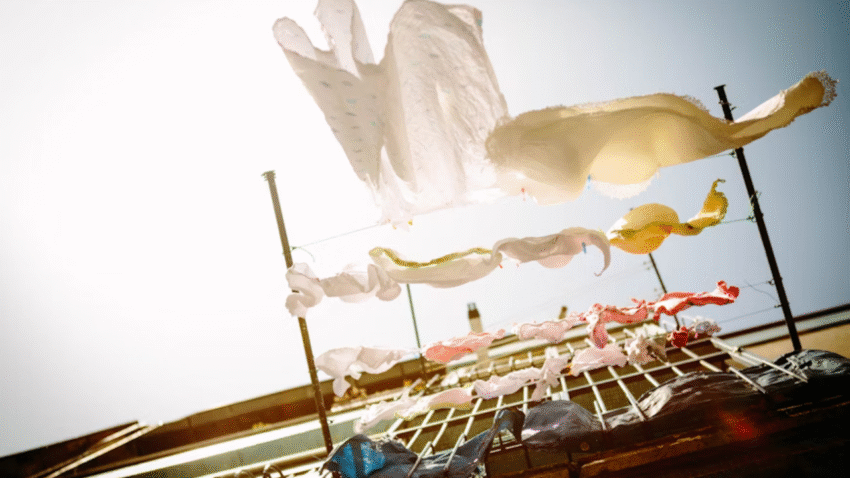Introduction
Laundry is something we all do, but many traditional laundry products contain harsh chemicals, synthetic fragrances, and non-biodegradable ingredients that can harm both your health and the environment. Learning how to choose eco-friendly laundry products can help you reduce your environmental footprint, protect waterways, and still get fresh, clean clothes. The key is knowing what to look for—and what to avoid—when you shop.
Why Eco-Friendly Laundry Products Matter
Conventional laundry detergents, fabric softeners, and stain removers often include chemicals like phosphates, optical brighteners, and synthetic fragrances. These can:
- Pollute rivers and oceans when they wash down the drain.
- Trigger allergies and skin irritation in sensitive individuals.
- Increase plastic waste through single-use packaging.
- Release microplastics from synthetic additives.
Choosing eco-friendly alternatives helps:
- Reduce water pollution.
- Lower your household’s chemical exposure.
- Minimize single-use plastic waste.
- Support sustainable manufacturing practices.
Step-by-Step Guide to Choosing Eco-Friendly Laundry Products
1. Check for Biodegradable Ingredients
What to do:
- Look for detergents made with plant-based or mineral-based cleaning agents.
- Avoid products with petroleum-derived surfactants.
Why it works:
Biodegradable ingredients break down naturally, reducing harm to aquatic life and the environment.
2. Avoid Phosphates and Optical Brighteners
What to do:
- Check the label for “phosphate-free” and “no optical brighteners.”
- If the label doesn’t specify, research the brand online.
Why it works:
Phosphates cause algae overgrowth in waterways, while optical brighteners are synthetic chemicals that don’t improve cleanliness but remain in water systems.
3. Choose Concentrated Formulas
What to do:
- Opt for concentrated detergents instead of diluted liquids.
- Use the recommended smaller amount per load.
Why it works:
Concentrated formulas reduce packaging waste, require less transportation fuel, and last longer.
4. Look for Certifications
What to do:
- Seek third-party eco-labels like:
- EPA Safer Choice (U.S.)
- EU Ecolabel (Europe)
- EcoCert
- Green Seal
- These certifications ensure the product meets environmental and safety standards.
Why it works:
Certifications take the guesswork out of identifying genuinely eco-friendly products.
5. Select Refillable or Low-Waste Packaging
What to do:
- Choose products in recyclable cardboard boxes, compostable pouches, or refill stations.
- Avoid single-use plastic jugs whenever possible.
Why it works:
Eco-friendly packaging reduces landfill waste and conserves resources.
6. Avoid Synthetic Fragrances and Dyes
What to do:
- Choose fragrance-free or naturally scented products using essential oils.
- Skip dyes, which serve no cleaning purpose.
Why it works:
Synthetic fragrances often contain allergens, hormone disruptors, and volatile organic compounds (VOCs).
7. Consider Alternative Formats
What to do:
- Try detergent sheets, powder, or soap nuts instead of traditional liquid detergent.
- These often use less packaging and lighter shipping materials.
Why it works:
Alternative formats reduce packaging waste and carbon emissions from transportation.
8. Choose Eco-Friendly Fabric Softeners and Stain Removers
What to do:
- Replace chemical softeners with vinegar or wool dryer balls.
- Look for stain removers made with plant-based enzymes instead of chlorine bleach.
Why it works:
Eco-friendly alternatives protect fabric quality while avoiding harmful residues.
9. Support Brands with Transparent Practices
What to do:
- Research the company’s sustainability policies.
- Support brands that use renewable energy, ethical sourcing, and responsible manufacturing.
Why it works:
Buying from responsible brands encourages more companies to adopt sustainable practices.
Common Mistakes to Avoid
Mistake 1: Falling for Greenwashing
Solution: Look for clear ingredient lists and third-party certifications, not just vague claims like “all-natural.”
Mistake 2: Assuming All Plant-Based Products Are Safe
Solution: Even natural ingredients can be harmful in large amounts—check for safety and biodegradability.
Mistake 3: Ignoring the Packaging
Solution: The product may be eco-friendly, but single-use plastic still contributes to pollution.
Mistake 4: Using Too Much Detergent
Solution: Follow dosage instructions—more detergent doesn’t mean cleaner clothes.
Mistake 5: Overlooking the Supply Chain
Solution: Support brands that source ingredients responsibly and minimize their carbon footprint.
Extra Laundry Tips & Hacks
- Store eco-friendly laundry products in a cool, dry place to extend their shelf life.
- Combine eco detergents with cold water washing to reduce both energy and environmental impact.
- Use a microfiber filter bag (like Guppyfriend) to reduce microplastic shedding from synthetic clothes.
- Related guide: Check out our article on “How to Make Laundry More Eco-Friendly Overall” for more sustainable laundry tips.
Conclusion
Choosing eco-friendly laundry products is about more than just buying “green” detergent—it’s about considering ingredients, packaging, certifications, and brand ethics. By making small, intentional changes to the products you use, you can protect the environment, reduce chemical exposure, and still enjoy clean, fresh clothes.
Bonus Tip: Try making your own laundry detergent at home using washing soda, borax, and castile soap for an ultra-low-waste, budget-friendly option.
Bookmark this guide to make eco-conscious laundry shopping simple and stress-free.
